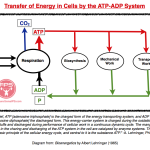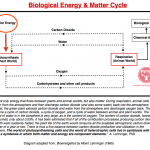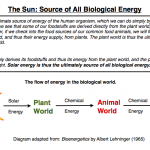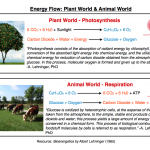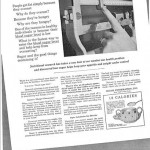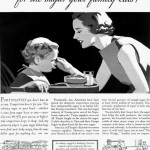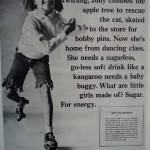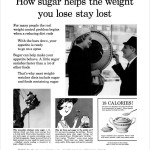Also see:
Energy Flow: Plant World and Animal World
The Sun: Source of All Biological Energy
Biological Energy & Matter Cycle
Collection of FPS Charts
Cellular Energy Production – Aerobic Respiration – The Krebs Cycle
Promoters of Efficient v. Inefficient Metabolism
Comparison: Oxidative Metabolism v. Glycolytic Metabolic
Comparison: Carbon Dioxide v. Lactic Acid
Carbon Dioxide Basics
Protect the Mitochondria
Transfer of Energy in Cells by the ATP-ADP System
Posted in General.
rev="post-8587" 2 comments
– January 27, 2013
Biological Energy & Matter Cycle
Also see:
Energy Flow: Plant World and Animal World
The Sun: Source of All Biological Energy
Transfer of Energy in Cells by the ATP-ADP System
Collection of FPS Charts
Cellular Energy Production – Aerobic Respiration – The Krebs Cycle
Promoters of Efficient v. Inefficient Metabolism
Comparison: Oxidative Metabolism v. Glycolytic Metabolic
Comparison: Carbon Dioxide v. Lactic Acid
Carbon Dioxide Basics
Protect the Mitochondria
Posted in General.
Comments Off on Biological Energy & Matter Cycle
– January 27, 2013
The Sun: Source of All Biological Energy
Also see:
Biological Energy & Matter Cycle
Energy Flow: Plant World and Animal World
Transfer of Energy in Cells by the ATP-ADP System
Collection of FPS Charts
Promoters of Efficient v. Inefficient Metabolism
Comparison: Oxidative Metabolism v. Glycolytic Metabolic
Comparison: Carbon Dioxide v. Lactic Acid
Carbon Dioxide Basics
Protect the Mitochondria
Light is Right
Using Sunlight to Sustain Life
The sun is the source of all biological energy, providing plants the means to produce glucose which in turn provides the animals that eat the plants the energy needed to perform biological work.
Posted in General.
Comments Off on The Sun: Source of All Biological Energy
– January 27, 2013
Energy Flow: Plant World and Animal World
Also see:
The Sun: Source of All Biological Energy
Biological Energy & Matter Cycle
Transfer of Energy in Cells by the ATP-ADP System
Collection of FPS Charts
Cellular Energy Production – Aerobic Respiration – The Krebs Cycle
Promoters of Efficient v. Inefficient Metabolism
Comparison: Oxidative Metabolism v. Glycolytic Metabolic
Comparison: Carbon Dioxide v. Lactic Acid
Carbon Dioxide Basics
Protect the Mitochondria
A look at the energy “balance sheets” of the animal and plant world reveals that they are nearly the inverse of each other. Photosynthesis is the reversal of cellular respiration and vice versa.
Posted in General.
Comments Off on Energy Flow: Plant World and Animal World
– January 27, 2013
Cheese making dates back 7500 years
Also see:
Cheese Chunks Adorn Ancient Mummies
Calcium Paradox
Hypertension and Calcium Deficiency
Blood Pressure Management with Calcium & Dairy
Calcium to Phosphorus Ratio, PTH, and Bone Health
Low CO2 in Hypothyroidism
Fatty Acid Synthase (FAS), Vitamin D, and Cancer
Parmigiano Reggiano cheese and bone health
Source of Dietary Calcium: Chicken Egg Shell Powder
Milk in context: allergies, ecology, and some myths
Nature (2012) doi:10.1038/nature11698
Earliest evidence for cheese making in the sixth millennium bc in northern Europe
Mélanie Salque, Peter I. Bogucki, Joanna Pyzel, Iwona Sobkowiak-Tabaka, Ryszard Grygiel, Marzena Szmyt & Richard P. Evershed
The introduction of dairying was a critical step in early agriculture, with milk products being rapidly adopted as a major component of the diets of prehistoric farmers and pottery-using late hunter-gatherers1, 2, 3, 4, 5. The processing of milk, particularly the production of cheese, would have been a critical development because it not only allowed the preservation of milk products in a non-perishable and transportable form, but also it made milk a more digestible commodity for early prehistoric farmers6, 7, 8, 9, 10. The finding of abundant milk residues in pottery vessels from seventh millennium sites from north-western Anatolia provided the earliest evidence of milk processing, although the exact practice could not be explicitly defined1. Notably, the discovery of potsherds pierced with small holes appear at early Neolithic sites in temperate Europe in the sixth millennium BC and have been interpreted typologically as ‘cheese-strainers’10, although a direct association with milk processing has not yet been demonstrated. Organic residues preserved in pottery vessels have provided direct evidence for early milk use in the Neolithic period in the Near East and south-eastern Europe, north Africa, Denmark and the British Isles, based on the δ13C and Δ13C values of the major fatty acids in milk1, 2, 3, 4. Here we apply the same approach to investigate the function of sieves/strainer vessels, providing direct chemical evidence for their use in milk processing. The presence of abundant milk fat in these specialized vessels, comparable in form to modern cheese strainers11, provides compelling evidence for the vessels having being used to separate fat-rich milk curds from the lactose-containing whey. This new evidence emphasizes the importance of pottery vessels in processing dairy products, particularly in the manufacture of reduced-lactose milk products among lactose-intolerant prehistoric farming communities6, 7.
Posted in General.
Comments Off on Cheese making dates back 7500 years
– December 23, 2012
High Heeled Shoes: A Real Pain
Also see:
Shod versus Unshod
Sarah Jessica Parker: Wearing high heels for years mangled my feet
ISU study finds high heels may lead to joint degeneration and knee osteoarthritis
FEBRUARY 2001 PODIATRY MANAGEMENT p. 129-38
Footwear: The Primary Cause of Foot Disorders A continuation of the scientific review of the failings of modern shoes.
By William A. Rossi, D.P.M.
Why Shoes Make “Normal” Gait Impossible: How flaws in footwear affect this complex human function.
William A. Rossi, D.P.M.
J Exp Biol 213, 2582-2588. August 1, 2010
On muscle, tendon and high heels
R. Csapo, C. N. Maganaris, O. R. Seynnes, and M. V. Narici
Wearing high heels (HH) places the calf muscle–tendon unit (MTU) in a shortened position. As muscles and tendons are highly malleable tissues, chronic use of HH might induce structural and functional changes in the calf MTU. To test this hypothesis, 11 women regularly wearing HH and a control group of 9 women were recruited. Gastrocnemius medialis (GM) fascicle length, pennation angle and physiological cross-sectional area (PCSA), the Achilles’ tendon (AT) length, cross-sectional area (CSA) and mechanical properties, and the plantarflexion torque–angle and torque–velocity relationships were assessed in both groups. Shorter GM fascicle lengths were observed in the HH group (49.6±5.7 mm vs 56.0±7.7 mm), resulting in greater tendon-to-fascicle length ratios. Also, because of greater AT CSA, AT stiffness was higher in the HH group (136.2±26.5 N mm–1 vs 111.3±20.2 N mm–1). However, no differences in the GM PCSA to AT CSA ratio, torque–angle and torque–velocity relationships were found. We conclude that long-term use of high-heeled shoes induces shortening of the GM muscle fascicles and increases AT stiffness, reducing the ankle’s active range of motion. Functionally, these two phenomena seem to counteract each other since no significant differences in static or dynamic torques were observed.
J Appl Biomech. 2012 Feb;28(1):20-8.
Walking on high heels changes muscle activity and the dynamics of human walking significantly.
Simonsen EB, Svendsen MB, Nørreslet A, Baldvinsson HK, Heilskov-Hansen T, Larsen PK, Alkjær T, Henriksen M.
The aim of the study was to investigate the distribution of net joint moments in the lower extremities during walking on high-heeled shoes compared with barefooted walking at identical speed. Fourteen female subjects walked at 4 km/h across three force platforms while they were filmed by five digital video cameras operating at 50 frames/second. Both barefooted walking and walking on high-heeled shoes (heel height: 9 cm) were recorded. Net joint moments were calculated by 3D inverse dynamics. EMG was recorded from eight leg muscles. The knee extensor moment peak in the first half of the stance phase was doubled when walking on high heels. The knee joint angle showed that high-heeled walking caused the subjects to flex the knee joint significantly more in the first half of the stance phase. In the frontal plane a significant increase was observed in the knee joint abductor moment and the hip joint abductor moment. Several EMG parameters increased significantly when walking on high-heels. The results indicate a large increase in bone-on-bone forces in the knee joint directly caused by the increased knee joint extensor moment during high-heeled walking, which may explain the observed higher incidence of osteoarthritis in the knee joint in women as compared with men.
J Am Podiatr Med Assoc. 2003 Jan-Feb;93(1):27-32.
Kinetics of high-heeled gait.
Esenyel M, Walsh K, Walden JG, Gitter A.
A within-subject comparative study of walking while wearing low-heeled sports shoes versus high-heeled dress shoes was performed to identify and describe changes in lower-extremity joint kinetics associated with wearing high-heeled shoes during level overground walking. A volunteer sample of 15 unimpaired female subjects recruited from the local community underwent quantitative measurement of sagittal and frontal plane lower-extremity joint function, including angular motion, muscular moment, power, and work. When walking in high-heeled shoes, a significant reduction in ankle plantar flexor muscle moment, power, and work occurred during the stance phase, whereas increased work was performed by the hip flexor muscles during the transition from stance to swing. In the frontal plane, increased hip and knee varus moments were present. These differences demonstrate that walking in high-heeled shoes alters lower-extremity joint kinetic function. Reduced effectiveness of the ankle plantar flexors during late stance results in a compensatory enhanced hip flexor “pull-off” that assists in limb advancement during the stance-to-swing transition. Larger muscle moments and increased work occur at the hip and knee, which may predispose long-term wearers of high-heeled shoes to musculoskeletal pain.
Ergonomics. 1985 Jul;28(7):965-75.
Falls in the healthy elderly: predisposing causes.
Gabell A, Simons MA, Nayak US.
One hundred healthy men and women aged 65-85 took part in a prospective study. They were clinically examined and underwent laboratory tests of gait, balance and reaction time at the start of an observation year.
All falls occurring in that year were analysed in detail. Three-quarters of them were trips or slips; however, ten personal factors were identified which, if present, increased the likelihood of a fall occurring. These were: disturbance of gait following a rest period accompanied by a lighting change (in persons aged 70 and over); an absent or abnormal plantar reflex; failure to wear prescribed spectacles; the presence of anxiety/depression, of a foot problem, or of two or more self-perceived limitations on mobility; a history of former wearing of high heels; a sustained drop in pulse pressure 5 min after cessation of a rest period; restricted neck movements; and the presence of an inverse Romberg ratio.
The number of circumstantial and personal factors contributing to the falls varied between three and twelve.
Lancet. 1998 May 9;351(9113):1399-401.
Knee osteoarthritis and high-heeled shoes.
Kerrigan DC, Todd MK, Riley PO.
BACKGROUND:
Little is known about the effects of walking in high heels on joints in the legs. Since osteoarthritis of the knee is twice as common in women as in men, we investigated torques (forces applied about the leg joints) of women who wore high-heeled shoes.
METHODS:
We studied 20 healthy women who were comfortable wearing high-heeled shoes. The women walked with their own high-heeled shoes and barefoot. Data were plotted and qualitatively compared; major peak values for high-heeled and barefoot walking were statistically compared. Bonferroni adjustment was made for multiple comparisons.
FINDINGS:
Measurement showed increased force across the patellofemoral joint and a greater compressive force on the medial compartment of the knee (average 23% greater forces) during walking in high heels than barefoot.
INTERPRETATION:
The altered forces at the knee caused by walking in high heels may predispose to degenerative changes in the joint.
Gait Posture. 2002 Feb;15(1):56-63.
Analysis of muscular fatigue and foot stability during high-heeled gait.
Gefen A, Megido-Ravid M, Itzchak Y, Arcan M.
Plantar pressure measurements and surface electromyography (EMG) were used to determine the effects of muscular fatigue induced by high-heeled gait. The medio-lateral (M/L) stability of the foot was characterized by measuring the M/L deviations of the center of pressure (COP) and correlating these data with fatigue of lower-limb muscles seen on EMG. EMG measurements from habitual high-heeled shoe wearers demonstrated an imbalance of gastrocnemius lateralis versus gastrocnemius medialis activity in fatigue conditions, which correlated with abnormal lateral shifts in the foot-ground or shoe-ground COP of these women.
Arch Phys Med Rehabil. 2005 May;86(5):871-5.
Moderate-heeled shoes and knee joint torques relevant to the development and progression of knee osteoarthritis.
Kerrigan DC, Johansson JL, Bryant MG, Boxer JA, Della Croce U, Riley PO.
OBJECTIVE:
To determine if women’s dress shoes with heels of just 1.5 in (3.8 cm) in height increases knee joint torques, which are thought to be relevant to the development and/or progression of knee osteoarthritis (OA) in both the medial and patellofemoral compartments.
DESIGN:
Randomized controlled trial.
SETTING:
A 3-dimensional motion analysis gait laboratory.
PARTICIPANTS:
Twenty-nine healthy young women (age, 26.7+/-5.0 y) and 20 healthy elderly adult women (age, 75.3+/-6.5 y).
INTERVENTIONS:
Not applicable.
MAIN OUTCOME MEASURES:
Peak external varus knee torque in early and late stance and prolongation of flexor knee torque in early stance. Three-dimensional data on lower-extremity torques and motion were collected during walking while (1) wearing shoes with 1.5-in high heels and (2) wearing control shoes without any additional heel. Data were plotted and qualitatively compared; major peak values and timing were statistically compared between the 2 conditions using paired t tests.
RESULTS:
Peak knee varus torque during late stance was statistically significantly greater with the heeled shoes than with the controls, with increases of 14% in the young women and 9% in the elderly women. With the heeled shoes, the early stance phase knee flexor torque was significantly prolonged, by 19% in the young women and by 14% in elderly women. Also, the peak flexor torque was 7% higher with the heeled shoe in the elderly women.
CONCLUSIONS:
Even shoes with moderately high heels (1.5 in) significantly increase knee torques thought to be relevant in the development and/or progression of knee OA. Women, particularly those who already have knee OA, should be advised against wearing these types of shoes.
Lancet. 2001 Apr 7;357(9262):1097-8.
Women’s shoes and knee osteoarthritis.
Kerrigan DC, Lelas JL, Karvosky ME.
We assessed whether wearing wide-heeled shoes has a similar effect on knee torque to narrow-heeled shoes by measuring the joint torques of 20 healthy women during walking. Wearing wide-heeled shoes had a 30% greater effect on peak external knee flexor torque than walking barefoot. Walking with wide-heeled and narrow-heeled shoes increased peak knee varus torque by 26% and 22%, respectively. Our findings imply that wide-heeled shoes cause abnormal forces across the patellofemoral and medial compartments of the knee, which are the typical anatomical sites for degenerative joint changes.
J Public Health Med. 2002 Jun;24(2):77-84.
The prevalence of foot problems in older women: a cause for concern.
Dawson J, Thorogood M, Marks SA, Juszczak E, Dodd C, Lavis G, Fitzpatrick R.
BACKGROUND:
Painful feet are an extremely common problem amongst older women. Such problems increase the risk of falls and hamper mobility. The aetiology of painful and deformed feet is poorly understood.
METHODS:
Data were obtained during a pilot case-control study about past high heel usage in women, in relation to osteoarthritis of the knee. A total of 127 women aged 50-70 were interviewed (31 cases, 96 controls); case-control sets were matched for age. The following information was obtained about footwear: (1) age when first wore shoes with heels 1, 2 and 3 inches high; (2) height of heels worn for work; (3) maximum height of heels worn regularly for work, going out socially and for dancing, in 10-year age bands. Information about work-related activities and lifetime occupational history was gathered using a Life-Grid. The interview included a foot inspection.
RESULTS:
Foot problems, particularly foot arthritis, affected considerably more cases than controls (45 per cent versus 16 per cent, p = 0.001) and was considered a confounder. Cases were therefore excluded from subsequent analyses. Amongst controls, the prevalence of any foot problems was very high (83 per cent). All women had regularly worn one inch heels and few (8 per cent) had never worn 2 inch heels. Foot problems were significantly associated with a history of wearing relatively lower heels. Few work activities were related to foot problems; regular lifting was associated with foot pain (p = 0.03).
CONCLUSION:
Most women in this age-group have been exposed to high-heeled shoes over many years, making aetiological research difficult in this area. Foot pain and deformities are widespread. The relationship between footwear, occupational activities and foot problems is a complex one that deserves considerably more research.
Clin Orthop Relat Res. 2000 Mar;(372):69-73.
Anterior knee pain in females.
Fulkerson JP, Arendt EA.
There are clear differences between men and women regarding anterior knee pain. Anatomic factors including increased pelvic width and resulting excessive lateral thrust on the patella are primary factors that predispose females to anterior knee pain. Effects of estrogen on connective tissue synthesis have been reported, but there is no clear mechanism by which this would affect anterior knee pain. Postural and sociologic factors such as wearing high heels and sitting with legs adducted can influence the incidence and severity of anterior knee pain in women.
Am J Phys Med Rehabil. 1991 Oct;70(5):246-54.
Footwear and posture. Compensatory strategies for heel height.
de Lateur BJ, Giaconi RM, Questad K, Ko M, Lehmann JF.
The belief that wearing high-heeled shoes increases lumbar lordosis is firmly ingrained in clinical folklore. Proponents of negative heel footwear argue that because high positive heels increase the lumbar lordosis, negative heels will decrease the lumbar lordosis. Quantitative documentation of the assumption regarding high heels is not to be found in the literature, although sporadic attempts to prove this assumption have been made throughout the 20th Century. Although other effects, such as decreased gait speed and step length, and increased knee flexion at heel strike have been found in more than one study, no increase in lumbar lordosis has been found. Where an actual decrease in lordosis has been found, authors tend to explain it away as inconsistent with what every clinician feels that he or she has observed. We felt it appropriate, then, to conduct both a static and a dynamic study to assess the effects of heel height on lumbar spine and lower limb joint kinematics in the sagittal plane, as well as other strategies to compensate for heel height. The results indicate that the greatest compensation is at the ankle and knee. Where a significant effect occurred in the lumbar spine (males, dynamic study), high heels decreased the lumbar lordosis, i.e., resulted in less swayback rather than more.
J Orthop Sports Phys Ther. 1995 Feb;21(2):94-9.
Effect of positive heel inclination on posture.
Franklin ME, Chenier TC, Brauninger L, Cook H, Harris S.
Millions of women wear high heels on a daily basis; however, few studies have analyzed the changes high heels (positive heel inclination) have on posture. The purpose of this study was to determine whether positive heel inclination changed the postural alignment of the head, spine, pelvis, and knees. Fifteen female college students ((mean age = 22.7, SD = 3.7 years) had sagittal plane angles measured for the cervical spine, thoracic spine, lumbar spine, sacral spine, and knee joints in addition to anterior/posterior displacements of the head and pelvis. All variables were assessed by a Metrecom Skeletal Analysis System, a three-dimensional electrogoniometer. Six randomized trials, three at zero heel inclination and three at 5 cm positive heel inclination, were measured. Analysis of variance results indicated positive heel inclination of subjects brought about significantly lower anterior pelvic tilt, lumbar lordosis, and sacral base angles when compared with zero heel inclination (p < .01). Clinically, patients with low back pain may be affected by high heel usage because of the reduction of the normal lumbar lordosis.
Gerontology. 2005 Sep-Oct;51(5):346-51.
Footwear characteristics and foot problems in older people.
Menz HB, Morris ME.
BACKGROUND:
Foot problems are common in older people, however the contribution of incorrectly fitting footwear and heel elevation to the development of foot pain and deformity has not been fully evaluated.
OBJECTIVES:
To examine the relationship between footwear characteristics and the prevalence of common forefoot problems in older people.
METHODS:
Presence of foot pain and deformity were identified in 176 people (56 men and 120 women) aged 62-96 years (mean 80.09, SD 6.42) using a questionnaire and clinical assessment. Shoe fit was determined by comparing length, width and area measurements of shoes with foot measurements. Past and present use of high heels in women was documented, and heel elevation of footwear was measured.
RESULTS:
Most subjects wore shoes narrower than their feet. Women wore shoes that were shorter, narrower and had a reduced total area compared to their feet than men. Wearing shoes substantially narrower than the foot was associated with corns on the toes, hallux valgus deformity and foot pain, whereas wearing shoes shorter than the foot was associated with lesser toe deformity. Wearing shoes with heel elevation greater than 25 mm was associated with hallux valgus and plantar calluses in women.
CONCLUSION:
Incorrectly fitting footwear is common in older people and is strongly associated with forefoot pathology and foot pain. These findings highlight the need for footwear assessment in the management of foot problems in older people.
J South Orthop Assoc. 1994 Winter;3(4):268-72.
The shod foot and its implications for American women.
Rudicel SA.
Throughout history, members of human societies have gone barefoot, and those societies seemingly had a low incidence of foot deformities and pain. Only one study has addressed the problem of infection through injury to the bare foot; otherwise, the unshod foot seems to have had minimal problems. Initially shoes were made in the shape of the foot and were sandals. Over time, shoes became decorative items and symbols of status and vanity. As the shape of shoes changed, they became deforming forces on the foot and the source of pain. Recent studies by the Council on Women’s Footwear of the American Orthopaedic Foot and Ankle Society have tried to document the problems caused by shoes on the feet of American women. Attempts should continue to educate women on appropriate shoes and proper fit.
Posted in General.
Comments Off on High Heeled Shoes: A Real Pain
– December 20, 2012
